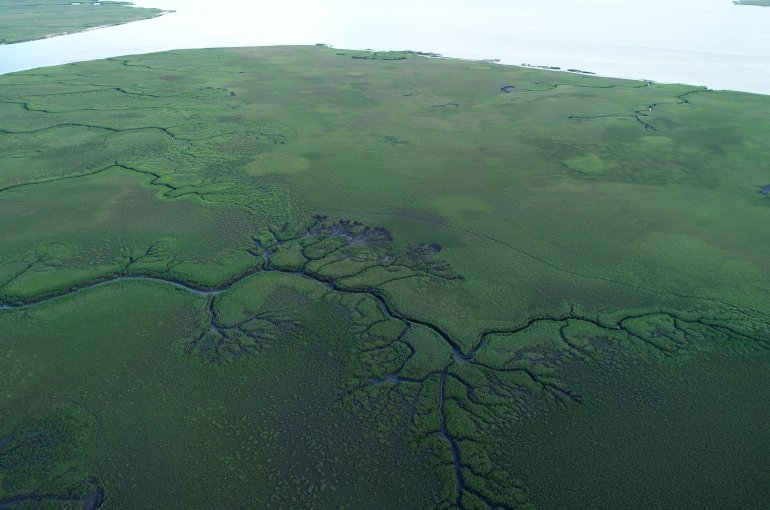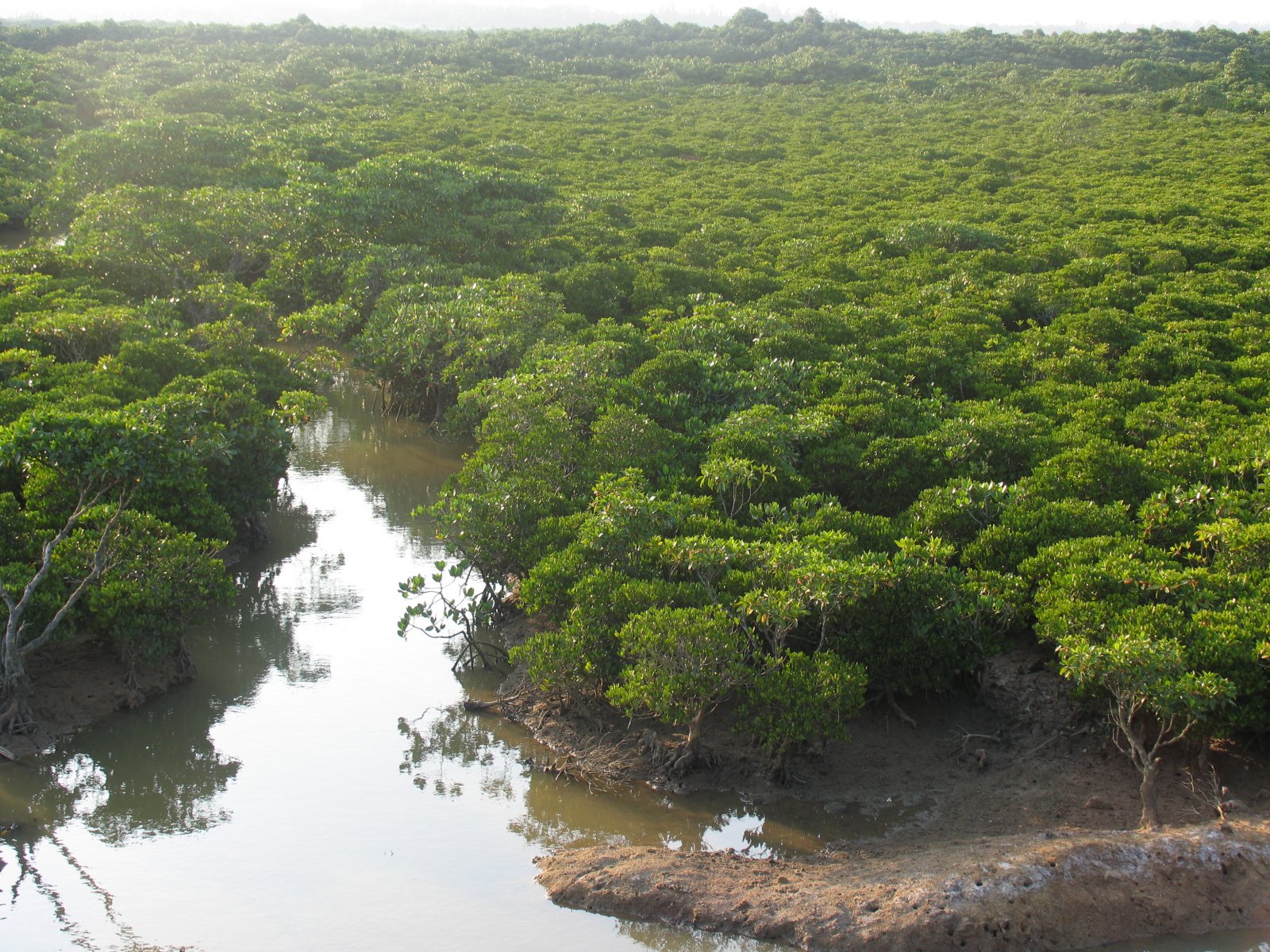Land-building marsh plants are champions of CO2 capture
Large-scale restoration of wetlands within reach

It is well known that CO2 emissions from burning fossil fuels underlie the havoc being wrought by climate change. Stemming further emissions through innovations in sustainable energy production is certainly part of the solution. However, slowing global warming also hinges upon our ability to capture and retain CO2 from the atmosphere. In a study published today in the journal Science, a team of researchers from the Netherlands, US and Germany show that salt and freshwater wetlands capture and store huge amounts of CO2 through the plants that build these landscapes. Although these wetlands are declining worldwide, the good news is that restoration is improving, amplifying their ability to be used as nature-based tools to counteract climate change.
Peat bogs, salt marshes, mangrove forests and seagrass beds cover only 1% of the Earth's total surface area, but sequester more than 20% of all the CO2 absorbed by ecosystems worldwide. This unique property arises because plants build these wet landscapes. Through such landscape-forming processes, an enormous amount of CO2 is captured and stored in the soil. The power of such feedbacks in creating ‘carbon capture hotspots’ has now been demonstrated by scientists from Utrecht University, the Royal Institute for Sea Research (NIOZ), Radboud University and the University of Groningen, in the Netherlands, the University of Florida and Duke University in the United States and Greifswald University in Germany, in a study which synthesizes recent scientific literature on the topic.
Hotspots of CO2 storage
In their study, the team shows that oceans and forests hold the most CO2 globally, followed by wetlands. "But when we look at the amount of CO2 stored per square meter, it turns out that wetlands store about five times more CO2 than forests and as much as five hundred times more than oceans,” says first author Ralph Temmink, wetland ecologist and at Utrecht University. “Peat bogs, salt marshes, mangrove forests and seagrass beds are therefore global 'hotspots' of CO2 storage.”
Landscape-forming plants
When the team zooms in on how these hotspots work, it turns out that these wetlands are all built by landscape-forming plants that help each other when they grow close together; a process that also drives CO2 capture. In raised bogs, peat mosses behave like sponges - together they retain an enormous amount of rainwater, driving their own growth. Underneath the living peat mosses, the remains of dead peat mosses accumulate. Because this layer, which is up to 10 meters thick, is permanently under water, the dead plants hardly decompose. This means that a lot of CO2 is retained as the mosses gradually build these peatland landscapes. In lowlands and coastal marshes, plants retain suspended sediments and dead plant material with their aboveground stems and leaves and complex root mat belowground. Nutrients are released from this captured detritus and the plants grow even better. Just like in raised bogs, this positive feedback between detritus capture and plant growth thickens the soil layer, in which a lot of CO2 is locked up.
Ecosystem restoration of wetlands
Although wetlands are essential in the fight against climate change, human interference is causing the loss of 1% of these ecosystems per year worldwide. Land reclamation and pollution disrupt the landscape-forming processes. Consequently, marshland disturbances release enormous amounts of CO2 from their soils. In total, wetland degradation is contributing about 5% of our global annual CO2 emissions.
Of all wetland restoration attempts, more than 50% fail because the landscape-forming properties of the plants are insufficiently taken into account. "Restoration is much more successful when the plants are placed in large dense clumps, when their landscape-forming properties are mimicked, or simply when very large areas are restored in one go,” says Tjisse van der Heide, researcher at NIOZ and professor of coastal ecology at the University of Groningen. "The good news is that with this knowledge, large-scale restoration of these important wetlands is now within reach.”
Opportunities for nature and society
“We support this study and are very happy with its findings”, says Teo Wams, director of nature managing NGO Natuurmonumenten; “It shows how important peatland and salt marshes are, and illustrates that we should take good care of these valuable ecosystems. Also, this knowledge helps us to improve management and restoration of unique landscapes”. Industry also sees opportunities: “We have been supporting research on restoration of CO2-capturing ecosystems for years. It is an important aspect of the ‘Building with Nature’ concept, and we expect it to become an important part of future hydraulic engineering projects”, says Mark van Koninksveld, R&D and Innovation Manager at the international marine contractor Van Oord.

Publication
Recovering wetland biogeomorphic feedbacks to restore the world’s biotic carbon hotspots. Ralph J.M. Temmink, Leon P.M. Lamers, Christine Angelini, Tjeerd J. Bouma, Christian Fritz, Johan van de Koppel, Robin Lexmond, Max Rietkerk, Brian R. Silliman, Hans Joosten, Tjisse van der Heide
Science, 2022 http://www.science.org/doi/10.1126/science.abn1479

